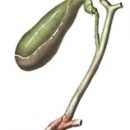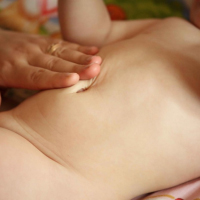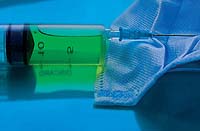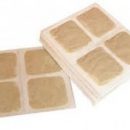You were removed the gallbladder, but colic appeared again? Learn from this article why it happens.
Content
Postcholecistectomic syndrome
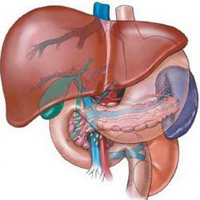
Cholecystectomy (gallbladder removal) is the most frequent operation of all operations that are conducted on the abdominal organs. More than half of the patients after surgery note good results, and approximately 20% remain pain or various disorders of the digestive function of the gastrointestinal tract. Most of these complaints refer to postcholycistectomic syndrome.
Strictly speaking, postcholecistectomic syndrome – This is a syndrome of the functional restructuring of the work of the biliary system after surgery. It includes disorders of the Sphinteer Sphinteer (muscular, the outlet of the overall bile duct in the duodenum) and the violation of the motor function of the duodenum itself. Most often there is a violation of the tonus of the sphincter Oddi by type of hypotension or hypertension.
However, to the postopholecistectomic syndrome, the states of the reasons for which were not eliminated during the operation. These are left in ducts of stones, stenosing papillitis or stenosis of bile duct, bile duct cysts and other mechanical obstacles in bile ducts that could be eliminated during surgery, but for various reasons remain unnoticed. Due to operational intervention, damage to the biliary tract, narrowing and scar changes in bile ducts could occur. Sometimes there is incomplete removal of the gallbladder, or the pathological process develops in a gallbladder duct cult.
The cause of post-olecistectomic syndrome may be diseases of the gastrointestinal tract, which developed due to the long existence of gallstone disease, which flow further after operational treatment. This is chronic pancreatitis, hepatitis, cholangitis, duodenitis and gastritis.
Stones in bile ducts
It is believed that the most common cause of postcholectectomic syndrome there are stones in bile ducts. Stones can be unnoticed and left in ducts during surgery or newly educated. Patients complain about pain in the right hypochondrium, which are bredit and accompanied or not accompanied by jaundice. During the arrival period, urine darkening can be detected. With abandoned stones, the first signs of illness appear shortly after surgical treatment, and time required for newly formed stones.
Stenzing Papillit
Stenzing Papillit – This is the narrowing of a large duodenal papilla (place of intensity of the total bile duct in the duodenum). Stenosis of a large duodenal papillary develops due to damage to the nipple by stones, the spread of inflammatory changes in bile ducts on it. With a narrowing, the papilla occurs a violation of the outflow of bile, which is manifested by itching, jaundice, increasing body temperature. In some patients, chronic or acute pancreatitis develops, due to the disturbance of the outflow of the pancreas.
Stenosis of the total bile duct
Stenosis of the total bile duct develops most often due to its damage during operational intervention, sometimes after removing stones from the ducts using endoscopic techniques. Patients with stenosis of bile ducts usually impose complaints of pain, yellowing of skin. Often they develop cholangitis (inflammatory process in bile ducts). The cysts of bile ducts are more often a congenital state.
The cause of postcholectectomic syndrome can be a violation of the tone and motor function of the duodenum or the obstruction of the duodenum. The most unfavorable complication of operational intervention is cholangitis – Inflammatory process in bile ducts. For its occurrence it is necessary to break the outflow of bile, the cause of which can be a variety of causes and the presence of infection.
In acute cholangitis, patients complain about chills, an increase in body temperature, pain. In the chronic course of the manifestation of the disease. Total weakness, various disorders of digestion, long-term small increase in body temperature.
Quite often, patients undergoing cholecystectomy meet chronic pancreatitis. Its occurrence is usually due to the disturbance of the outflow of the pancreas. Patients are worried about pain in the top of the abdomen, which have a hazing character. Nausea, sometimes vomiting, digestive disorders.
Treatment of cholecystectomic syndrome
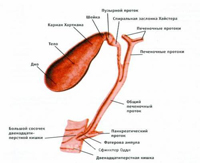 First of all, patients are recommended diet. Restriction of animal fats, high cholesterol products, easily friendly carbohydrates, sharp, acidic, fried dishes. Dietary constraints start immediately after surgery. Distributed rubbed soups, kissels, low-fat broths. Then join Vegetable puree, porridge on water, steam cutlets, non-fat fish meat. In the future, the patient's nutrition should contain a normal amount of protein, a reduced amount of fats and carbohydrates.
First of all, patients are recommended diet. Restriction of animal fats, high cholesterol products, easily friendly carbohydrates, sharp, acidic, fried dishes. Dietary constraints start immediately after surgery. Distributed rubbed soups, kissels, low-fat broths. Then join Vegetable puree, porridge on water, steam cutlets, non-fat fish meat. In the future, the patient's nutrition should contain a normal amount of protein, a reduced amount of fats and carbohydrates.
Medical treatment of postcholectectomic syndrome depends on complaints and clinical manifestations of the disease. Antispasmodic drugs (but-shpa, papaverine) are prescribed, drugs normalizing the gastrointestinal tract (Raglan, Cerukal, Bimaral, Sulpirid, Galstina).
Patients with chronic hepatitis use hepatoprotectors, and ulsofalc or hepatofalc of the plant is sometimes assigned to improving bile outflow. To improve the processes of digestion, compensation for income into the gastrointestinal tract of a smaller number of less concentrated bile, alcohol, cholenzim, mezim.
In the presence of chronic pancreatitis, patients need intake enzyme preparations: festal, Digestal, Pancreatin. To normalize microflora in the intestine, bificol, lenx, bakyubyl. Sometimes it is necessary to apply endoscopic dissection of the Sphinteer Oddi (endoscopic sphincterotomy). A physiotherapeutic treatment, therapeutic physical education, spa treatment is appointed,.

